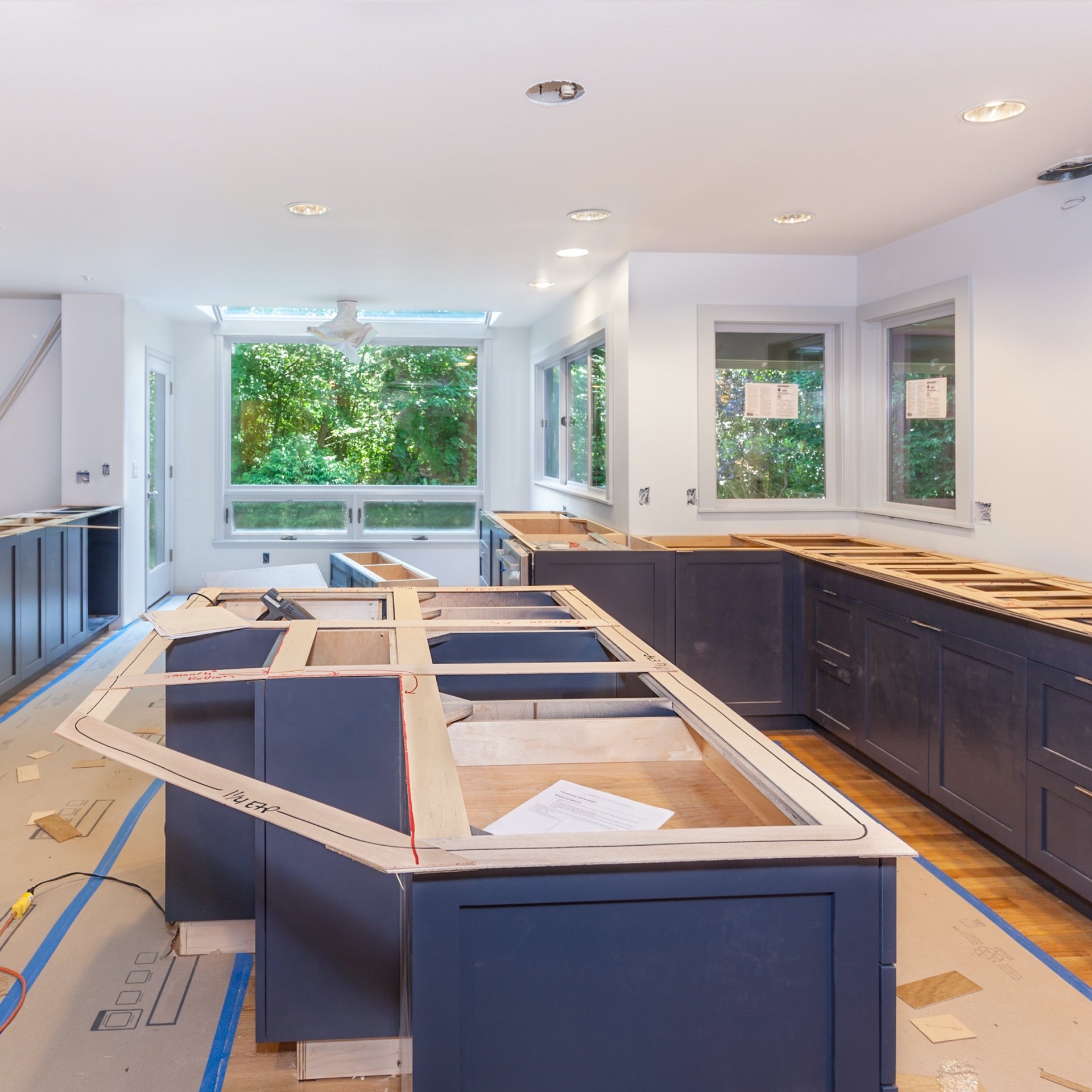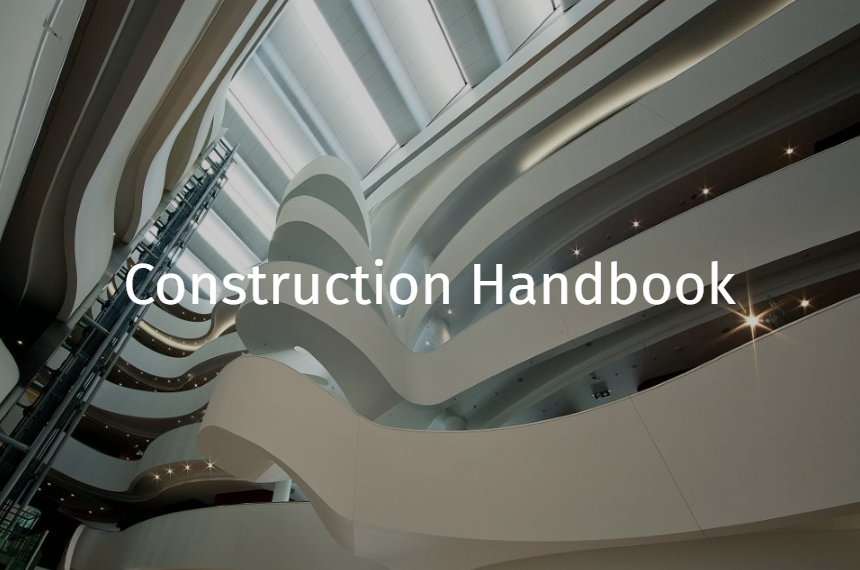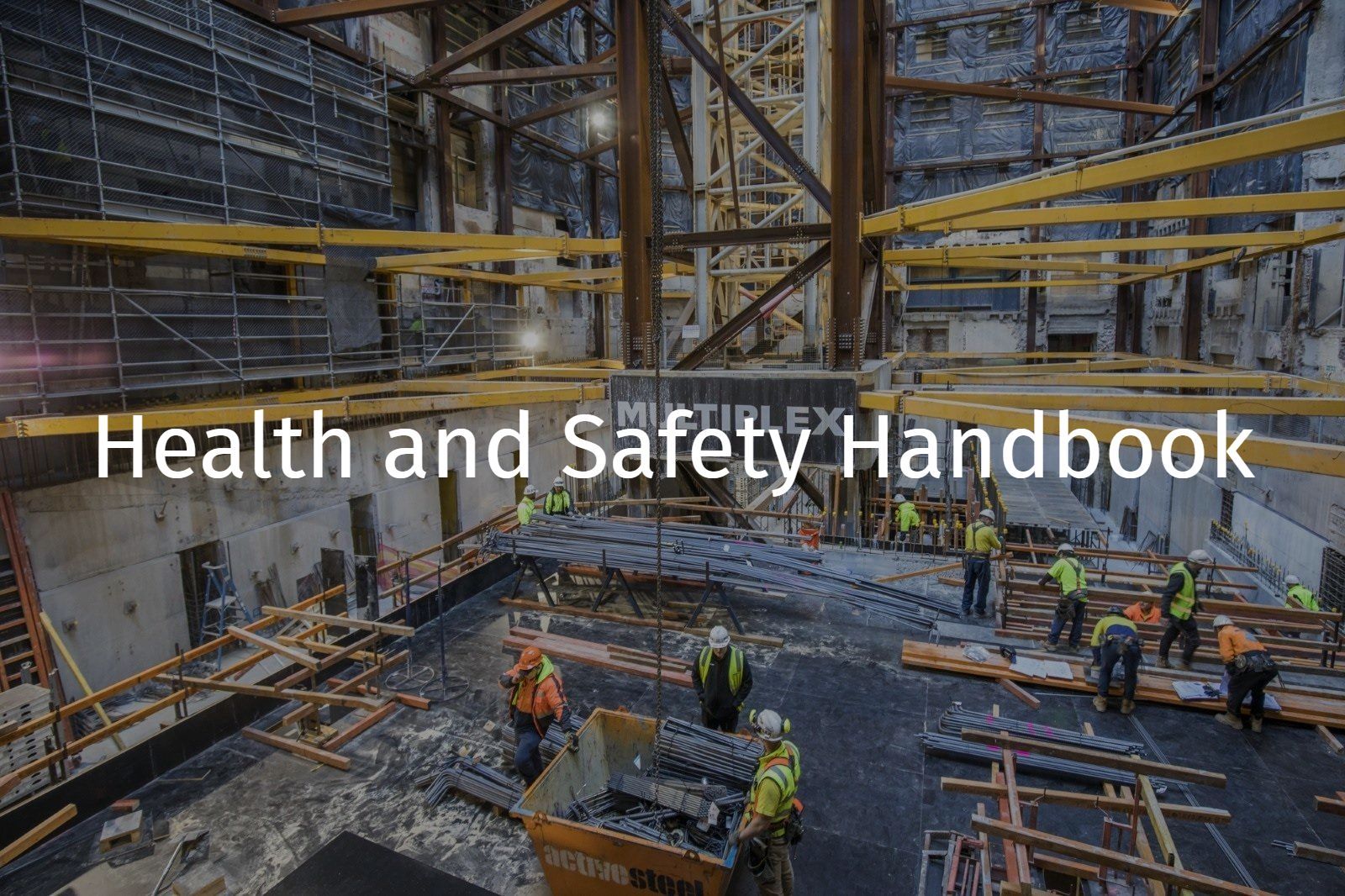WA - Danger Zones and Minimum Approach Distances - Electrical Network Access
References: R Record keeping requirement | E An engineering/certification requirement | P A permit to work requirement | S A safe work method statement (SWMS) / written plan
Hazards
- ‘Live’ Electricity
- Electric shock, burns, death
- Contact with overhead electric lines (powerlines); or
- Arching e.g. between electrical source and plant/equipment/materials/structures
- Contact with underground electric lines
- Fire
- Explosion
- Ground collapse/subsidence
- Network asset damage
- Restricted/reduced working area
Planning considerations
- Location, height or depth, arrangement, and visibility of the electric lines (overhead, underground)
- Whether the electric line (overhead, underground) is owned by a network operator / is a network asset
- The type and location of work activities planned to be conducted (i.e. method of excavation)
- The type of plant/equipment planned to be used
- Voltage, insulated or bare and the associated danger zones, minimum approach distances or clearance zones
- Sway or sag of overhead electric lines
- Isolation or mechanical protection measures
- Terrain
- Environmental conditions
Danger Zones / Minimum Approach Distances
A danger zone is a defined area surrounding live electrical assets (overhead electric lines), the danger zone is determined by the voltage.
Minimum approach distances apply for network asset/s (underground cables) for work using power tools or plant, for non-powered hand tool or non-destructive digging. The minimum approach distances are defined by the network operator (see Figure 2).
Work is not permitted in the danger zone of an electric line unless authorised by the relevant authority / network operator and controlled*.
All electrical assets must be treated as ‘live’ unless they are tested & proven to be isolated/de-energised
Overhead electric lines / power lines
The danger zones of overhead electric lines (power lines) are, within
- 0.5 metres of a live insulated overhead electric line or aerial bundled conductor line of a voltage of not more than 1 000 volts
- 1.0 metre of a live uninsulated overhead electric line power line of a voltage of not more than 1 000 volts
- 3.0 metres of a live overhead electric line, whether insulated or not, of a voltage exceeding 1 000 volts but not more than 33 000 volts; and
- 6.0 metres of a live overhead electric line, whether insulated or not, of a voltage exceeding 33 000 volts.
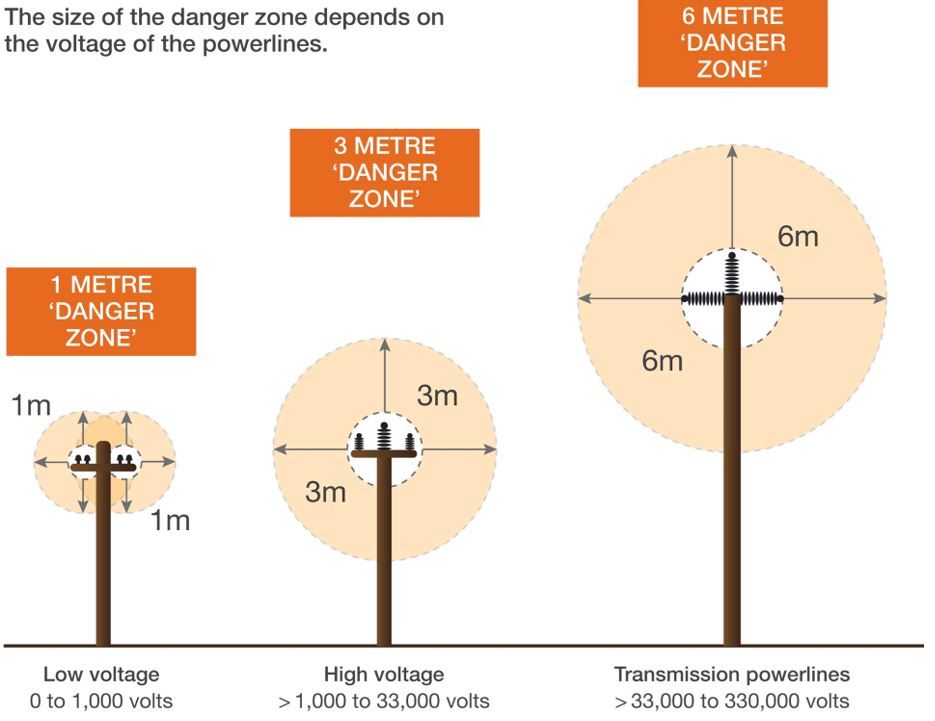
Clearance Zones for Scaffold
Overhead electric lines are a potential hazard where they are in close proximity to persons erecting, modifying, dismantling, working from or in the vicinity of a scaffold.
Where scaffold activities are in close proximity to overhead electric lines, consult with the relevant regulatory authority / network operator.
For voltages of 11kV or less, close proximity is typically a minimum clearance of 4m between overhead electric lines and the adjacent scaffold.
The fitting of non-conductive materials on the outer face of the scaffold adjacent to overhead electric lines may be required by the regulatory authority / network operator.
Underground electric cables / lines
Minimum approach distances for underground electric cables / lines are described in figure 2.
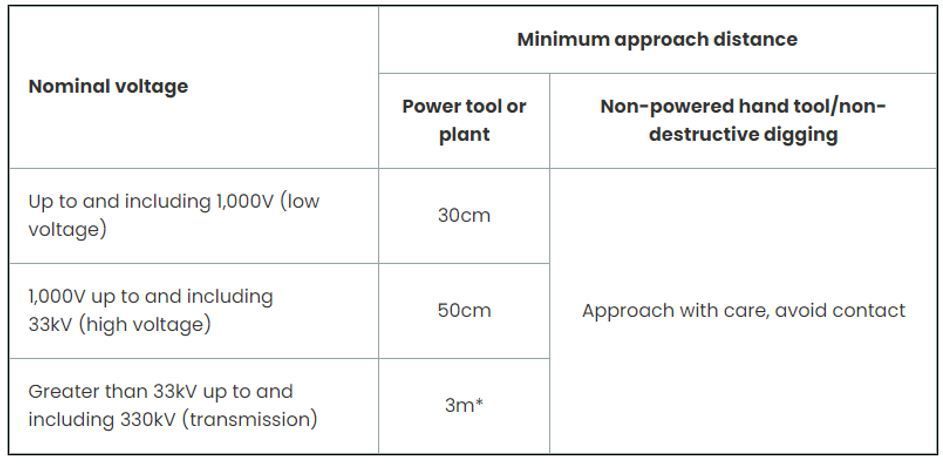
Risk Management
Where work may encroach a danger zone or breach a minimum approach distance, the PCBU (MPX / SC ) carrying out the work is required to
- S Complete a risk assessment and define control measures in a SWMS
- R Seek out asset information i.e. Dial before you dig, review any relevant ASCON, services drawings
- Consult with the relevant authority / network operator
- Consider the need for / use of a competent observer / spotter
- Include any additional controls as required by the relevant authority / network operator, and
- S Update the risk assessment to reflect the network operator’s requirements.
Danger zone - controlled work* (in addition to risk management)
Where work cannot be completed outside the danger zone, the relevant authority / network operator must be contacted to obtain authorisation.
Where the relevant authority / network provider grants authorisation (written permission) they will provide specific information for the management and control of the work, including but is not limited to
- Installation of aerial covers (tiger tails or similar) on low voltage electric lines (up to 1 000 volts), (Note: tiger tails are only a visible indicator and do not reduce the danger zone area)
- Isolation of low voltage or high voltage network asset/s
- Temporary relocation of the network asset/s
- Use a competent observer / spotter
- R Any authorisation (written permission) / associated documents etc. are required to be copied to MPX and be available at the site
Minimum approach distances – controlled work (in addition to risk management)
Prior to carrying out any work that intrudes into a minimum approach distance
- P An excavation permit must be obtained, and all controls as defined verified, including but not limited to
- S Site specific SWMS
- Scanning (e.g. ground penetrating radar, electro-magnetic detection) and / or vacuum potholing / hand dig potholing
- Height limitations (loads, plant / equipment)
- Review ground conditions and control measure
Consider management and control of the work, including but not limited to
- Isolation of low voltage or high voltage network asset/s
- Temporary relocation of the network asset/s
- Mechanical protection of network asset/s
- Non-destructive digging
- Use a competent observer / spotter
Preventing ground collapse – overhead / underground electrical assets
When planning to carry out excavation work in proximity to an electric asset, excavation methods and ground support must be considered, and controls reviewed, verified and implemented.
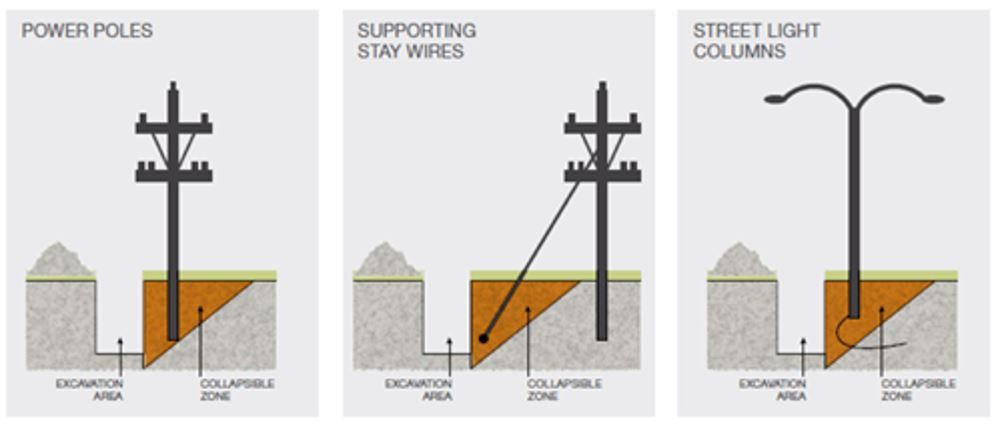

References
2022 WA WHS (General) Regulations
AS 3012 Electrical installations – construction and demolition sites
AS 4576 Guidelines for scaffolding
https://www.westernpower.com.au/safety/working-near-our-network/building-construction/
Document Control
Version 1 September 2024 – New Standard
